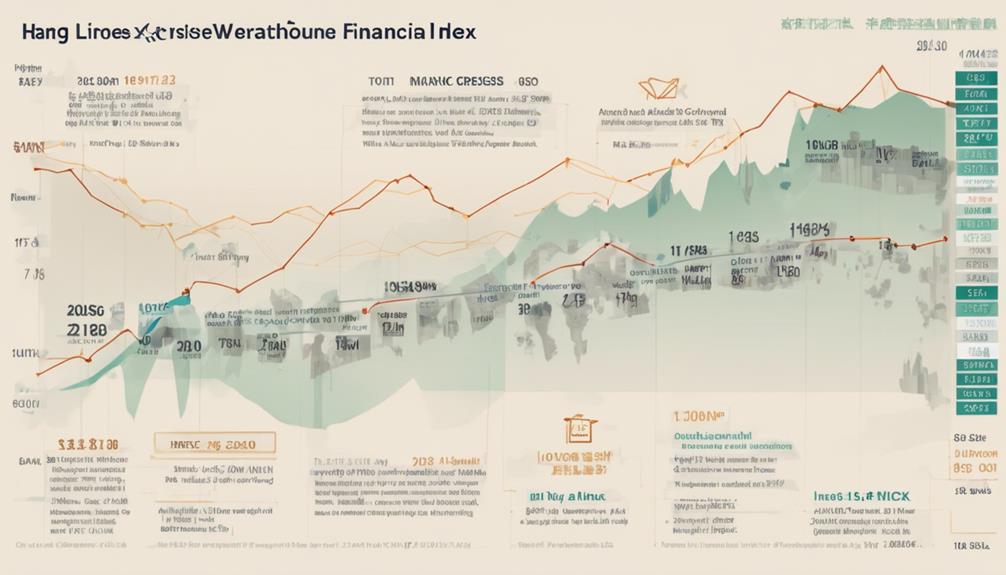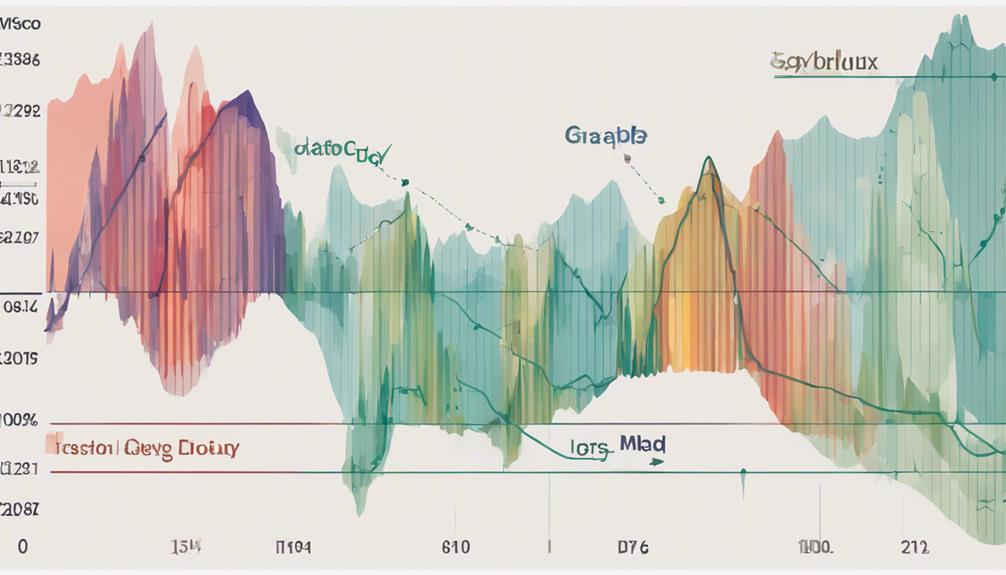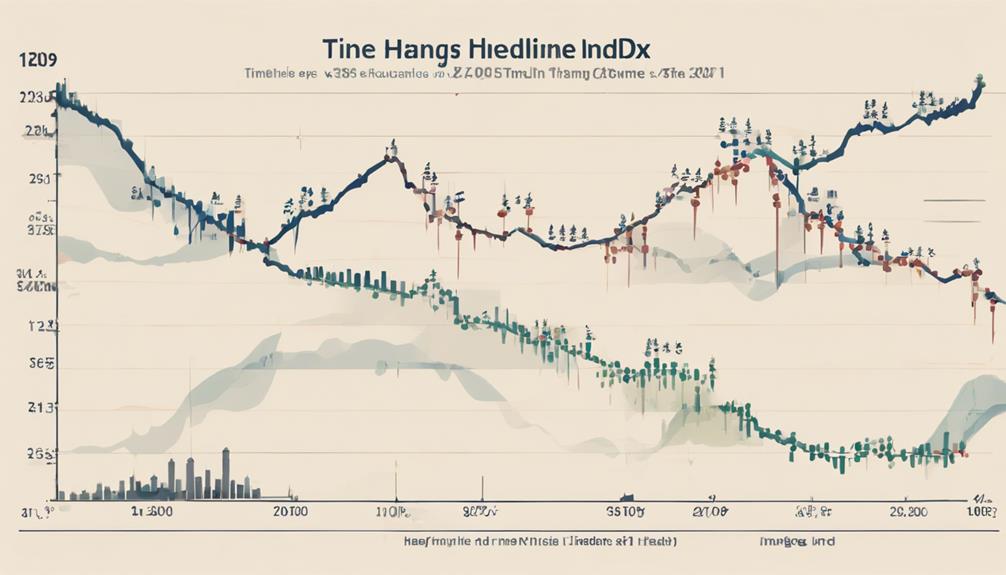Have you ever wondered how external factors like global economic crises have influenced the performance of the Hang Seng Index over the years?
As you explore the historical analysis of the Hang Seng Index, you will uncover intriguing patterns and correlations between significant events and index movements that have shaped the financial landscape of Hong Kong.
Understanding these dynamics could potentially offer valuable insights into market behavior and investment strategies.
Hang Seng Index Origin
The Hang Seng Index originated in November 1969 when Ho Sin Hang, chairman of Hang Seng Bank, introduced it as a counterpart to the Dow Jones Index for tracking stock market performance in Hong Kong. This index, known as the Hang Seng Index or HSI, consists of the 50 largest and most actively traded companies listed on the Hong Kong Stock Exchange.
To be included in this index, companies must meet specific criteria such as market value, turnover, listing history of at least 24 months, and financial performance. The calculation methodology of the Hang Seng Index is based on a free-float-adjusted, market capitalization-weighted approach, which provides a comprehensive reflection of the market trends in Hong Kong.
As a key benchmark for the Hong Kong stock market, the Hang Seng Index plays a crucial role in providing insights into the overall performance and trends of the region's stock exchange.
Key Events Impacting Index

During turbulent market conditions, significant events have had a noticeable impact on the Hang Seng Index performance.
The stock market index in Hong Kong faced a substantial drop of 12.10% on October 21, 1987, in the aftermath of the global stock market crash known as Black Monday.
Additionally, the Asian financial crisis in 1997 triggered a 30.74% decline in the Hang Seng Index, hitting a low of 6,850.60 points in October of that year.
The outbreak of the SARS epidemic in 2003 further impacted the index, leading to a 16.66% plummet in March, with the index reaching a low of 8,840.68 points.
Moreover, during the global financial crisis of 2008, the Hang Seng Index experienced a significant 48.27% decrease, hitting a low of 11,015.84 points in October.
Political unrest in Hong Kong in 2019 also took a toll on the index, causing a 15.42% drop and reaching a low of 25,281.30 points in August.
Performance During Economic Shifts

In times of economic shifts, the Hang Seng Index demonstrates remarkable adaptability and resilience. Despite facing various economic crises throughout history, the Hang Seng Index has shown the ability to weather turbulent times and bounce back.
- The Hang Seng Index dropped by 48.3% during the 2008 financial crisis but eventually recovered.
- In the Asian Financial Crisis of 1997, the index experienced a sharp decline of 34.5% triggered by currency devaluations and financial instability.
- During the dot-com bubble burst in 2000, the Hang Seng Index plummeted by 67% before gradually recovering.
These instances highlight the index's ability to withstand economic shocks and adapt to changing conditions. Whether it was the SARS outbreak in 2003 or the global COVID-19 pandemic in 2020, the Hang Seng Index has shown resilience in the face of adversity, making it a key component of the Seng Composite and a significant indicator of market performance.
Index Growth Over Decades

Despite facing economic challenges, the Hang Seng Index has exhibited impressive growth over the decades, reflecting its resilience and adaptability in the market.
Since its inception in November 1969 with a base of 100 points, the index has shown remarkable progress. It surpassed 10,000 points in December 1993, 20,000 in December 2006, and 30,000 in October 2007, showcasing consistent upward momentum. The highest recorded point for the index was 33,223.58 in January 2018, marking a significant milestone in its growth trajectory.
With an average annual change of approximately 19.2% since 1965, the Hang Seng Index has proven to be a robust performer in the financial landscape.
The Hang Seng Indexes Company plays a crucial role in maintaining the index's relevance and accuracy in tracking market performance. Investors closely monitor the index's current price as it serves as a barometer for the overall market health and sentiment.
Future Prospects and Predictions

Looking ahead, market analysts anticipate various factors to influence the future performance of the Hang Seng Index.
- Global economic conditions: The interconnected nature of global markets means that economic events in major economies like the US, China, and the Eurozone can have ripple effects on the Hang Seng Index.
- Market trends: Shifts in investor sentiment, technological advancements, and industry developments can impact the overall performance of the index.
- Geopolitical events: Events such as trade disputes, political instability, and regulatory changes can create uncertainty in the market, leading to fluctuations in the Hang Seng Index.
How Does the Historical Performance of the Hang Seng Index Impact Forecasting?
When it comes to forecasting Hang Seng Index importance, analyzing its historical performance is crucial. The index’s past movements and trends can provide valuable insight into potential future changes. Understanding how the Hang Seng Index has behaved in the past can help inform more accurate forecasts and predictions.
Frequently Asked Questions
What Is the Average Annual Return of the Hang Seng Index?
For the Hang Seng Index, the average annual return is approximately 19.2%. Market volatility analysis suggests staying informed for sound decisions. Consider diverse investment strategy recommendations to navigate fluctuations effectively and optimize returns over time.
Which Index Represents the Performance of the Hong Kong Stock Market?
The Hang Seng Index (HSI) represents the performance of the Hong Kong stock market. It tracks the largest 50 companies, making it a key indicator. Keep an eye on HSI for stock performance insights.
What Is the Historical PE Ratio of the Hang Seng Index?
Looking back at historical trends, the Hang Seng Index's PE ratio has fluctuated, reflecting market shifts. Long-term analysis reveals insights into valuation and investor sentiment. Understanding these patterns can guide your investment decisions.
What Methodology Is Used to Calculate the Hang Seng Index?
When calculating the Hang Seng Index, a weighted average methodology is used. It considers stock prices, issued shares, and adjustment factors. Market cap and turnover influence stock weights. The index dates back to 1965, with 100 points as the base.
Conclusion
As you reflect on the historical analysis of the Hang Seng Index performance, you can see how it has weathered many storms and reached new heights.
With its rollercoaster ride of ups and downs, this index has proven to be a resilient indicator of market trends.
So, buckle up and get ready for the next ride on the financial time machine!


